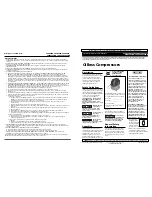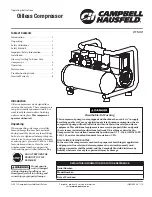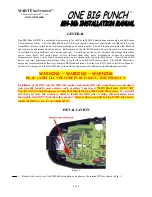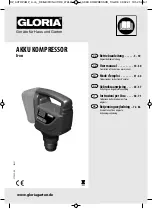
14 Piping installation
Installation and operation manual
22
RK RKXYQ8T7Y1B
VRV IV compressor unit for indoor installation
4P499900-1B – 2021.12
a b c d
a
Cut the insulation (under the knockout hole).
b
Hit on the knockout hole, and remove it.
c
Remove the burrs.
d
Paint the edges and areas around the edges using repair
paint to prevent rusting.
NOTICE
Precautions when making knockout holes:
▪ Avoid damaging the casing.
▪ After making the knockout holes, we recommend you
remove the burrs and paint the edges and areas
around the edges using repair paint to prevent rusting.
▪ When passing electrical wiring through the knockout
holes, wrap the wiring with protective tape to prevent
damage.
4
Connect piping (by brazing) as follows:
8 HP
5 HP
d
c
c
d
b
a
b
a
3 1
2
3
2
1
a
Liquid line (circuit 1: to heat exchanger unit)
b
Gas line (circuit 1: to heat exchanger unit)
c
Gas line (circuit 2: to indoor units)
d
Liquid line (circuit 2: to indoor units)
1
Pinched piping
2
Piping accessory
3
Field piping
5
Reattach the service cover.
6
Seal all gaps (example: a) to prevent small animals from
entering the system.
a
a
a
a
WARNING
Provide adequate measures to prevent that the unit can be
used as a shelter by small animals. Small animals that
make contact with electrical parts can cause malfunctions,
smoke or fire.
14.3
Checking the refrigerant piping
14.3.1
About checking the refrigerant piping
Refrigerant piping works are
finished?
The indoor units, compressor
unit and/or heat exchanger
unit were already powered
ON?
Use procedure:
"Method 2: After power ON".
Finish piping work.
Use procedure:
"Method 1: Before power ON
(regular method)".
Yes
No
No
Yes
It is very important that all refrigerant piping work is done before the
units (compressor unit, heat exchanger unit or indoor units) are
powered on.
When the units are powered on, the expansion valves will initialise.
This means that they will close. Leak test and vacuum drying of field
piping, heat exchanger unit and indoor units is impossible when this
happens.
Therefore, there will be explained 2 methods for initial installation,
leak test and vacuum drying.
Method 1: Before power ON
If the system has not yet been powered on, no special action is
required to perform the leak test and the vacuum drying.
Method 2: After power ON
If the system has already been powered on, activate setting [2‑21]
(refer to
"16.1.4 To access mode 1 or 2"
30]). This setting will
open field expansion valves to guarantee a R410A piping pathway
and make it possible to perform the leak test and the vacuum drying.
NOTICE
Make sure that the heat exchanger unit and all indoor units
connected to the compressor unit are powered on.
NOTICE
Wait until the compressor unit has finished the initialisation
to apply setting [2‑21].
















































